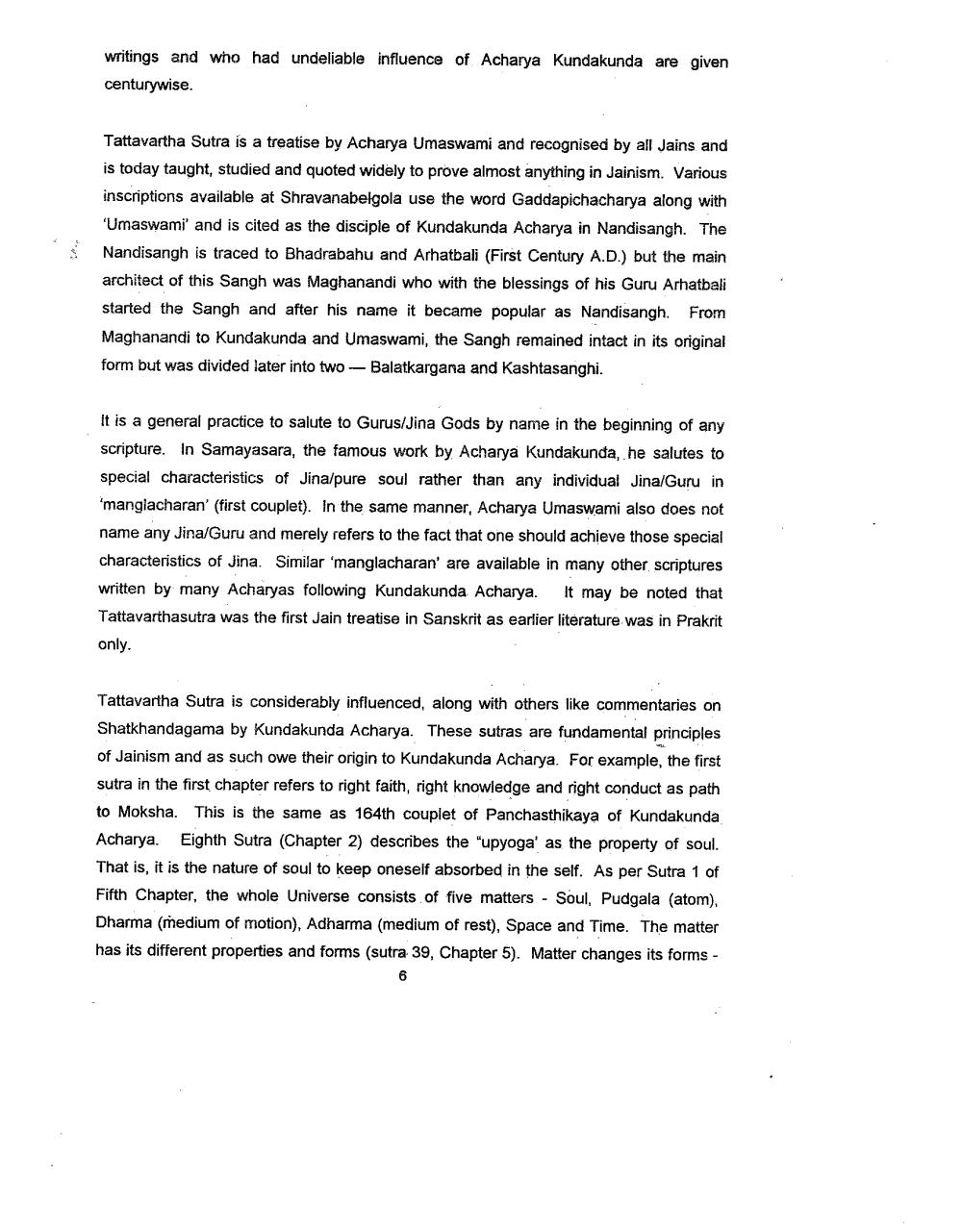________________
writings and who had undeliable influence of Acharya Kundakunda are given centurywise.
Tattavartha Sutra is a treatise by Acharya Umaswami and recognised by all Jains and is today taught, studied and quoted widely to prove almost anything in Jainism. Various inscriptions available at Shravanabelgola use the word Gaddapichacharya along with 'Umaswami' and is cited as the disciple of Kundakunda Acharya in Nandisangh. The Nandisangh is traced to Bhadrabahu and Arhatbali (First Century A.D.) but the main architect of this Sangh was Maghanandi who with the blessings of his Guru Arhatbali started the Sangh and after his name it became popular as Nandisangh. From Maghanandi to Kundakunda and Umaswami, the Sangh remained intact in its original form but was divided later into two - Balatkargana and Kashtasanghi.
It is a general practice to salute to Gurus/Jina Gods by name in the beginning of any scripture. In Samayasara, the famous work by Acharya Kundakunda, he salutes to special characteristics of Jina/pure soul rather than any individual Jina/Guru in "mangiacharan' (first couplet). In the same manner, Acharya Umaswami also does not name any Jina/Guru and merely refers to the fact that one should achieve those special characteristics of Jina. Similar 'manglacharan' are available in many other scriptures written by many Acharyas following Kundakunda Acharya. It may be noted that Tattavarthasutra was the first Jain treatise in Sanskrit as earlier literature was in Prakrit only.
Tattavartha Sutra is considerably influenced, along with others like commentaries on Shatkhandagama by Kundakunda Acharya. These sutras are fundamental principles of Jainism and as such owe their origin to Kundakunda Acharya. For example, the first sutra in the first chapter refers to right faith, right knowledge and right conduct as path to Moksha. This is the same as 164th couplet of Panchasthikaya of Kundakunda Acharya. Eighth Sutra (Chapter 2) describes the "upyoga' as the property of soul. That is, it is the nature of soul to keep oneself absorbed in the self. As per Sutra 1 of Fifth Chapter, the whole Universe consists of five matters - Soul, Pudgala (atom), Dharma (medium of motion), Adharma (medium of rest), Space and Time. The matter has its different properties and forms (sutra 39, Chapter 5). Matter changes its forms -




